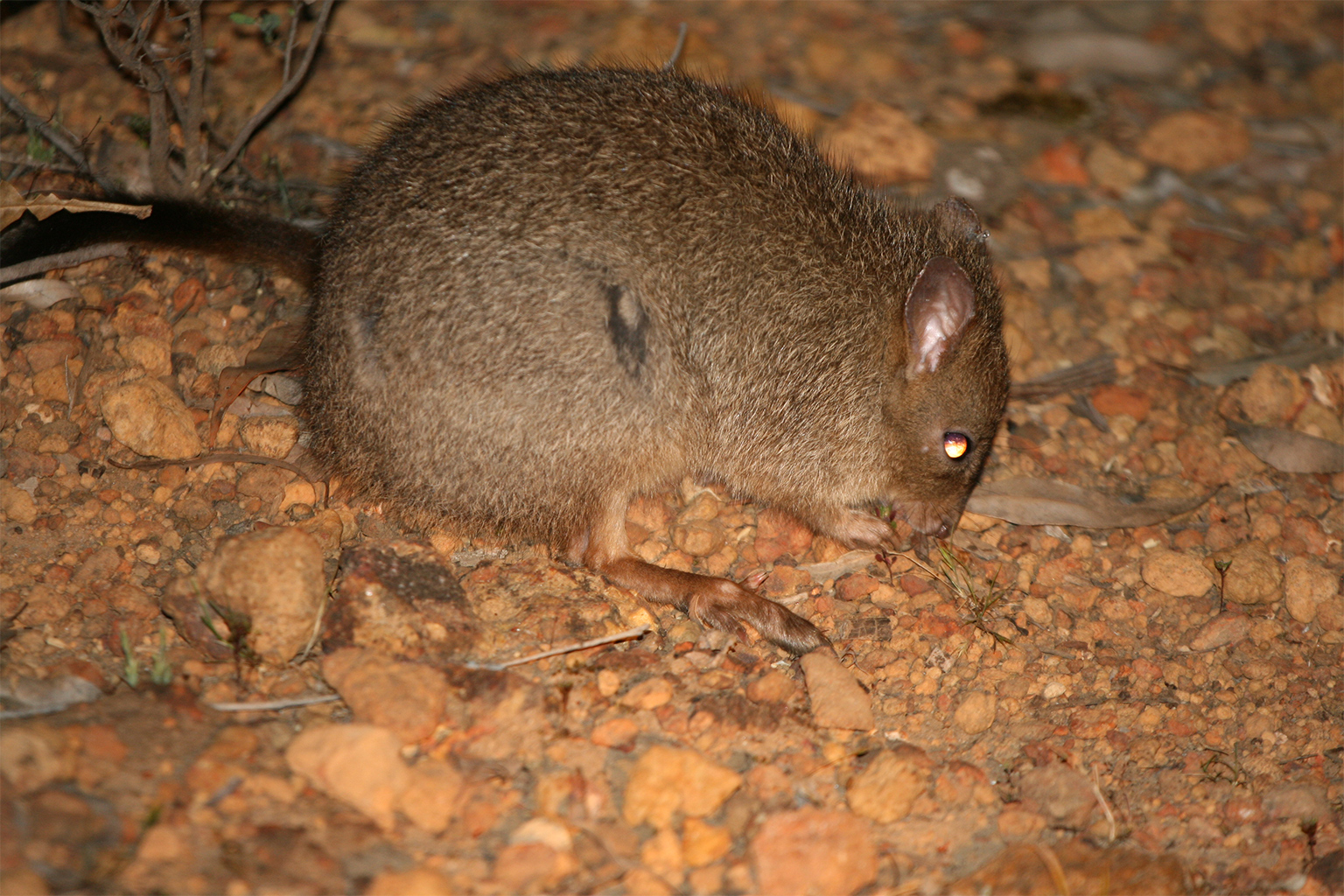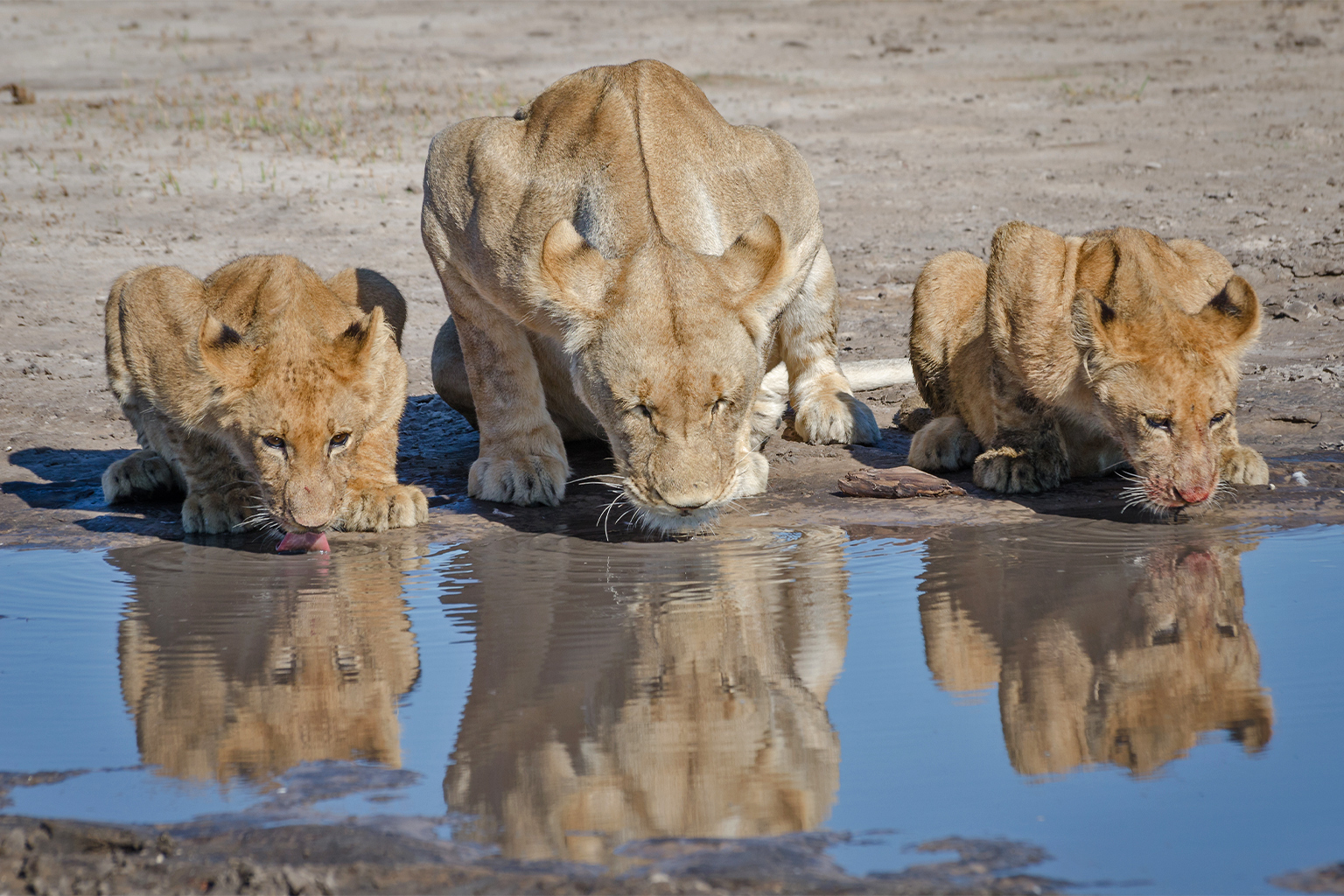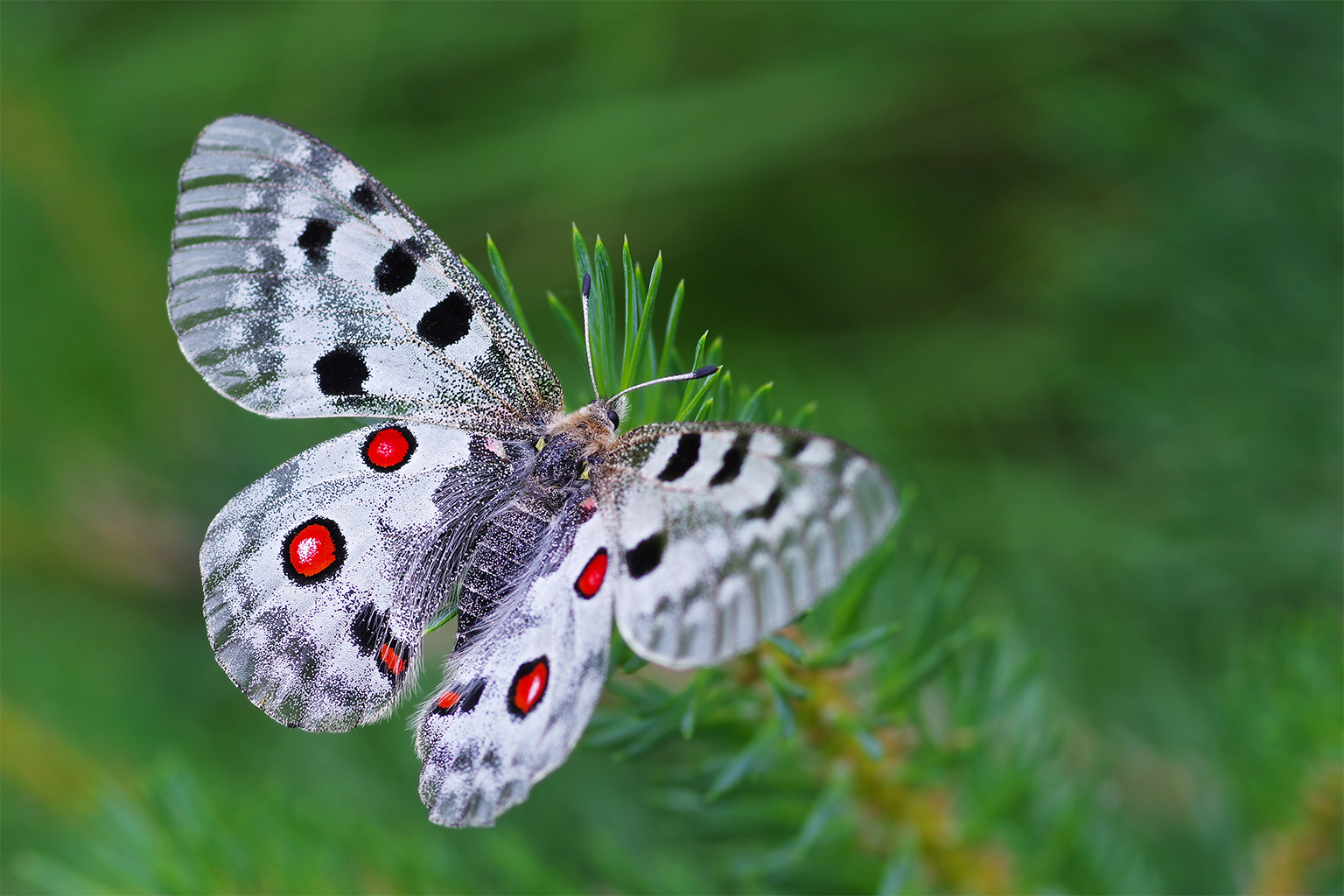- Translocation is a conservation technique that returns lost species to their previous habitats or moves then to new, safer areas in a bid to boost their wild populations.
- But research shows that it only works about half the time, with failures often linked to low numbers of individual animals being released, or the presence of invasive predators.
- Climate change is also a factor, rendering former habitats unsuitable for a species’ return, and necessitating finding a new home for the animals.
- But introducing species into areas where they didn’t historically occur can be dangerous too, as it’s difficult to predict whether they will survive, and whether they pose a threat to the native species already living there.
Today around 350 Mauritius fodies fly around the lowlands of Île Aux Aigrettes, a small island off the coast of Mauritius. Their flourishing flocks belie the predation and habitat destruction that nearly drove these colorful songbirds to extinction in their original habitat. Twenty years ago, conservationists began breeding the birds in captivity and releasing them on the little limestone islet they now call home. The fodies (Foudia rubra) have since thrived to the point that they’re no longer considered critically endangered.
“We thought we were going to have to do a lot of intensive work for decades, but they bounced back so nicely on the island,” says Vikash Tatayah, conservation director of the Mauritian Wildlife Foundation, a conservation NGO that ran the project.
Returning lost species to their former stomping grounds or moving them to new, safer locales is a critical conservation technique called conservation translocation. But research shows it only works about half the time. With 1 million species headed toward extinction over the next few decades, scientists are urgently trying to work out how to improve the strategy’s odds of success.
“Moving species around has been an extremely important tool in the past. If we can improve the likelihood of succeeding in future, then it will become a much more reliable tool in the fight against large-scale biodiversity loss,” says Shane Morris, a conservation ecologist at the University of Tasmania, Australia.

Research is beginning to unpick what sets apart successful reintroductions from the failures. Strength in numbers is one winning strategy. Projects where species bounce back tend to release more individuals compared to failed projects, research finds. Also, animals taken from wild populations seem to boost their numbers more quickly than do individuals born and bred in captivity.
Other research shows that climate change is also a factor. Many projects fail because species are reintroduced into former hangouts where the climate is no longer a good fit. Moving species to locations with a more favorable climate is key to their survival, some researchers say. This may mean relocating some species to areas they have not historically called home.
But helping species colonize habitats beyond their traditional ranges is a dangerous move, says Anthony Ricciardi, an invasion ecologist at McGill University in Canada. It’s difficult to predict if the relocated populations will thrive, or if it will harm local species, he says. Conservationists are calling for a discussion of the controversial tactic at the U.N. biodiversity summit in China next year.
Still, learning from past mistakes, perseverance, and a bit of trial and error go a long way to helping species get back on their feet without too many disasters, Tatayah says.
Home sweet home
Tatayah’s project to save the Mauritius fody worked out well in the end but it had a bumpy start, he says. Their first attempt at breeding and releasing the birds on the island failed.
“The first year was a failure. The first releases are always the ones that bring you the most headaches. There was a lot of discouragement among the staff,” he says.
However, the team persevered. After their false start they reviewed the project to figure out how they could improve. Part of the problem was that the team only released three birds on their first try. In their second attempt, they released 21 birds, and this time the fodies were able to get a foothold on the island.

Studies examining the success and failure of translocation projects agree that releasing a robust number of individuals is key. In a recent review, Morris found that projects were more likely to triumph and achieve higher population growth rates when they released between 20 and 50 individuals.
“The more animals you can release, the more likely they’re going to stick. Smaller populations are more liable to disaster and inbreeding,” Morris says.
Staggering releases over a couple of years, as Tatayah did with the Mauritius fody, also helps, Morris says. A well-resourced project with highly trained staff and enough funding to see the project through any twists and turns is also crucial, he adds.
Tatayah says the Mauritius fodies owe much of their survival to their captive breeders and handlers who carefully worked out what to feed the birds to give them the best start and how to handle them without causing harm.
“You have to produce good-quality birds. It is a very specialized skill,” Tatayah says.
Taking time to monitor and review the project to make improvements is also essential, he says.
“If we had got stuck in the failure of the first year and not tried to tweak things, we would not have known the success we did,” he says.
Struggling to get a foothold
Not all translocation projects are born equal. The location of a project has a significant impact on its outcome, Morris’s review shows. Species in Europe and North America are more likely to prosper when reintroduced or moved to new areas. But species in Oceania have a harder time making a go of it, the review finds.
For example, the majestic California condor (Gymnogyps californianus) that once graced the skies over much of the western coast of North America, was listed as critically endangered by the late 1960s. Just 20 years later, there were just 23 California condors left on Earth. These remaining birds were put in a captive-breeding program, and in 1992 the U.S. Fish and Wildlife Service began releasing condors back into the wild. The population has now grown to more than 400 birds.
In contrast, an initiative to save the brush-tailed bettong (Bettongia penicillata), a mouse-like marsupial in Australia, fared less well. Conservationists moved 85 brush-tailed bettongs from Western and South Australia to a nature reserve in the southeast of the country. They fit 33 of them with radio transmitters to track their movements. All were dead in just over a year. The bettongs fell prey to the feral cats that run riot over much of the country.
“Australia has a problem with introduced predators on a scale like nowhere else,” Morris says.
Native species don’t fear invasive predators and so are an easy meal. Even when projects release large numbers of individuals to try to “swamp” the predators, the translocated species struggle to get a foothold, Morris says.

Eradicating predators and making habitats as welcoming as possible are important factors in safeguarding translocated species, Tatayah says. His team worked hard to ensure that Île Aux Aigrettes was free from rats and cats before relocating the Mauritius fodies. They also knew that monkeys on Mauritius raided the songbirds’ nests for eggs, which had contributed to their demise. Tatayah’s team picked Île Aux Aigrettes as the birds’ new home partly because there are no monkeys there.
“Surveys on Mauritius showed that rats and monkeys were having a big impact on the nesting success of the fody,” Tatayah says.
But it’s not just predators that some species need to worry about. Conflict with farmers and villagers puts many large animals and carnivores at risk.
For example, lions in Botswana run into trouble when they pick off livestock for a meal. Conservation efforts try to relocate these big cats to prevent farmers from shooting them. But these projects are challenging because land is limited, scientists say.
Researchers and conservation practitioners examined whether moving livestock-preying lions to new areas in Botswana would help ease the conflict and allow the lions to flourish elsewhere. The researchers worked with the Botswana Department of Wildlife and National Parks to fit tracking collars onto 13 lions set for translocation. From the animals’ movements, the researchers found that several relocated lions were able to find their way back to where they came from and had to be recaptured and released again. In less than a year, nearly all the translocated lions were dead.
Many translocations failed because lions were frequently moved into territories already occupied by other lions, says Richard Reading, a conservation biologist who helped run the lion study.
“It can be quite difficult for a translocated animal to find an unoccupied territory or a pride willing to accept them,” he says.
Moving around large animals like lions can work if there’s good-quality habitat available in which to rehome them. But one of the most important strategies to helping save lions is to stop them from killing livestock in the first place, Reading says. Guard dogs, secure corrals, and flags strung up along fences can keep away predators and help protect livestock and lions, Reading says.

In the hot house
Moving vulnerable species into a safe and fitting habitat is key to helping them reestablish a population. But climate change is making this increasingly difficult, says Sarah Dalrymple, a conservation ecologist at the Liverpool John Moores University in the U.K.
Many translocation projects pick release sites by looking at where species historically lived. But most projects don’t assess whether a habitat’s current climate is still suitable for returning species.
Climate change means that some areas that species used to call home are now or will soon be a poor fit, Dalrymple says. In a recent study, she and her team examined more than 100 attempts to relocate various amphibian, reptile and insect species. They used models that predict how species ranges could change as the climate alters, to judge the suitability of the release sites.
For many of the translocation attempts that failed, the site selected did not offer a comfortable climate for the relocated species. A fitting climate had the strongest influence on a translocation success compared to other factors, like numbers of individuals released, the research found.
“When the climate suitability is higher, the probability of success is also higher,” Dalrymple says.
This is true for the endangered Apollo butterfly (Parnassius apollo), which saw its range shrink across Europe during the 1990s. A conservation project collected eggs from the wild for captive breeding, and released the larvae at sites around Finland where the butterfly was previously present. The butterfly flourished in sites where the climate was comfortable, but failed to take off elsewhere.

“There are a lot of factors that tie into translocation failures. The climate signal is there for all of these species,” Dalrymple says.
As the climate changes, finding at-risk species a suitable new home will increasingly require helping them migrate to areas where they have not traditionally lived, Dalrymple says. Scientists need to figure out what kind of habitat species will need in the future rather than relying on what they had in the past, she says.
“I hope that people get the message that we can’t look back any longer. There isn’t any analog state from the past that we can try and recreate in the same location,” she says.
But this controversial conservation strategy known as assisted migration is risky, Ricciardi says. Introduced species can become invasive, wreaking havoc with local ecosystems, he says.
“The introduction of species into areas where they did not evolve and where they are functionally novel can create evolutionary mismatches that result in substantial — and sometimes devastating — disruptions to biodiversity and food webs, especially to insular systems such as lakes and islands,” Ricciardi says.
An attempt to relocate the Tasmanian devil (Sarcophilus harrisii), a small carnivorous marsupial, illustrates Ricciardi’s concerns. In 2012, conservation efforts moved a healthy population to Maria Island off the east coast of Tasmania to save the species from a deadly facial cancer. But the introduced predators devastated seabird and penguin colonies native to the tiny island.
In another instance, the predatory rosy wolfsnail (Euglandina rosea) was brought to islands in the Indian and Pacific oceans, including Hawai’i and French Polynesia, from the 1950s onward to help combat the African giant snail (Lissachatina fulica). But the rosy wolfsnail caused more damage than it prevented, leading to the extinction of several other snail species.
Morris agrees that introducing species to areas where they have not historically called home is a risky strategy.
“Ecosystems are so complex. There are so many trade-offs. It is a real threat that shouldn’t be underplayed,” he says.
The IUCN, the global conservation authority, recommends a cautious approach to assisted migration projects. Dalrymple, who is a member of the IUCN’s conservation Translocation Specialist Group, says the recommendations flag the potential dangers of introducing species, including the possibility they will become invasive or spread pathogens. To tackle these challenges, Dalrymple suggests that projects start with small, trial introductions. Projects also need an emergency exit plan if things go wrong, which may include eradicating the introduced species. She supports a call for the U.N. biodiversity summit to draw up and agree a clear set of guidelines on assisted migrations.
The stakes are high, but doing nothing isn’t an option, Morris says.
“By not doing something,” he says, “we’re also potentially complicit in the extinction of a species.”
Citations:
Bellis, J., Bourke, D., Maschinski, J., Heineman, K., & Dalrymple, S. (2020). Climate suitability as a predictor of conservation translocation failure. Conservation Biology, 34(6), 1473-1481. doi:10.1111/cobi.13518
Brodie, J. F., Lieberman, S., Moehrenschlager, A., Redford, K. H., Rodríguez, J. P., Schwartz, M., … Watson, J. E. (2021). Global policy for assisted colonization of species. Science, 372(6541), 456-458. doi:10.1126/science.abg0532
Morris, S. D., Brook, B. W., Moseby, K. E., & Johnson, C. N. (2021). Factors affecting success of conservation translocations of terrestrial vertebrates: A global systematic review. Global Ecology and Conservation, 28, e01630. doi:10.1016/j.gecco.2021.e01630
Novak, B. J., Phelan, R., & Weber, M. (2021). U.S. conservation translocations: Over a century of intended consequences. Conservation Science and Practice, 3(4). doi:10.1111/csp2.394
Priddel, D., & Wheeler, R. (2004). An experimental translocation of brush-tailed bettongs (Bettongia penicillata) to western New South Wales. Wildlife Research, 31(4), 421. doi:10.1071/wr03050
Ricciardi, A., & Simberloff, D. (2021). Assisted colonization risk assessment. Science, 372(6545), 925. doi:10.1126/science.abj2682
Scoleri, V. P., Johnson, C. N., Vertigan, P., & Jones, M. E. (2020). Conservation trade-offs: Island introduction of a threatened predator suppresses invasive mesopredators but eliminates a seabird colony. Biological Conservation, 248, 108635. doi:10.1016/j.biocon.2020.108635
Soorae, P. S. (2018). Global reintroduction perspectives: 2018. Gland, Switzerland: IUCN SSC Reintroduction Specialist Group. doi:10.2305/IUCN.CH.2018.08.en
Banner image: The Mauritius fody made a comeback after a conservation project relocated some captive bred individuals. Males are redheaded. Image courtesy of Jacques de Speville.
